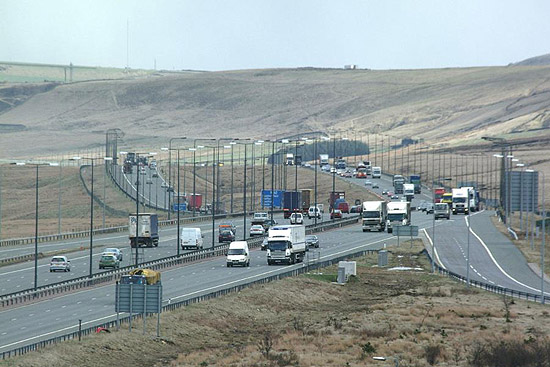The city of Manchester
is located 190 miles north west of the English capital,
London. It lies some 30 miles inland on relatively flat
ground backed in the north and east by the Pennine
hills. From earliest times it has been at the
centre of north-soth and east-west transportation
routes. The Romans built a fort here where their
roads from York to Chester and from Ribchester to
Hadrian's Wall intersected. They chose a site
beside the River Irwell and they gave that fort the name
Mamucium.
A number of important rivers flow south and west out of
the hills providing the city and its satellites with
water and power. The humid climate combined with
the availability of water power led to the development
of a textile industry.
The water was an important resource in the production of
and dying of textiles. The humid air made it
possible to spin fragile threads.
As water was replaced by steam power the textile
industry moved from a rural to an urban setting and in
Manchester, and the towns that surrounded it, large
cotton mills sprang up changing the landscape for
decades to follow.
Manchester became known as Cottonopolis as the textile
trade became its main source of income but the British
climate didn't support the growth of cotton so for
Manchester to become successful it was necessary for it
to build upon its natural advantages regarding
transportation.
First came turnpike roads replacing the pack-horse
tracks, then the narrow and broad canals and in the
1840s the railway. This made it possible for raw
material to move around the country and finished
materials to reach markets but Manchester's land-locked
position was seen in the 19th Century as an impediment
to it reaching its potential. The solution was the
construction of a 36 mile navigation capable of
accommodating ocean-going ships. Known
affectionately as The Big Ditch, the Manchester Ship
Canal opened in 1894 and for much of the 20th Century
Manchester was an important "sea-port"
The canal terminated in Old Trafford and around it an
extensive dock developed and taking advantage of the
easy transportation system industries grew up in
Trafford Park.
Today the the
textile industry and many other industries have
moved overseas. The advent of containers and
the creation of huge container ports on the coast
made the Port of Manchester uneconomic and now ocean
going ships do not ply the canal. Just as the
canal was the secret to the success of the city the
changes that have occurred around it are reflective
of the changes in the city's fortune. Today
motorways, railways and an International airport
serve a city that has two major universities, a
major financial community and a growing media
centre. Ironically, todays white collared
office workers live in city centre apartments
created by renovating Victorian cotton mills and
warehouses.
